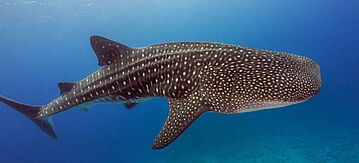Bonn Convention

Conservation of migratory species
Many animal species migrate long distances: some bird species such as terns and storks even travel thousands of kilometres. They migrate regularly from their wintering area to their summer habitats, from their breeding grounds to their feeding and resting grounds, from dryer areas to more humid zones. Along this journey, they cross some, or even many, national borders.
In some countries such as Egypt, Cyprus, Malta and France, many songbird and waterfowl species are hunted or poached unchecked and indiscriminately during their migration. In other countries, storks, vultures and other birds with large wingspans die in unprotected power lines. In some cases, stepping stone habitats, which migratory species rely on during migration, are endangered. Many wetlands, for instance, that are important for birds are drained and attics are sealed and insulated, thus preventing bats from finding their usual refuge. In addition, more and more long fences and infrastructure such as wide roads and railways are built, disrupting centuries-old migration routes of elephants and antelopes.
More and more countries, however, like Germany and its Länder are advocating for the conservation of migratory animal species and some are making great efforts to advance this cause.
History and content of the Convention on the Conservation of Migratory Species of Wild Animals
The Convention on the Conservation of Migratory Species of Wild Animals (CMS), also known as the Bonn Convention, is an agreement designed to protect migratory animal species. The Convention was established at the initiative of the United Nations Conference on the Human Environment (Stockholm 1972) with particular support from Germany. Its Final Act was signed in Bonn in 1979. The Convention entered into force in 1983. As of 1 January 2021 the Convention on Migratory Species has 132 Parties. One country signed the original Convention but has yet to ratify it so is not a Party (Jamaica - annotated as "Sig"). The CMS Secretariat is headquartered in Bonn.
The Convention on Migratory Species covers migratory animal species, a significant proportion of whose members cyclically and predictably cross one or more national jurisdictional boundaries. Migratory birds make up the largest part of all migratory species. The Convention, however, also covers whales and dolphins, bats, terrestrial mammals, some reptile species (sea turtles in particular), different fish species (for example sharks) and one butterfly species.
Appendix I contains fauna species that are in danger of extinction. It prohibits, in particular, the Taking of these animals from the wild.
Appendix II lists species with an unfavourable conservation status that require or would significantly benefit from international cooperation. A single species can be listed in both appendices.
Agreements under the CMS
Seven internationally binding agreements and 19 non-binding agreements under international law, called Memoranda of Understanding (MoUs), have so far been concluded under the CMS. Germany is a Party to the following four regional agreements, all of which can be accessed on the CMS website:
- ASCOBANS on the conservation of small cetaceans
- AEWA on the conservation of migratory waders and waterbirds
- EUROBATS on the conservation of populations of European bats
- Agreement on the conservation of seals in the Wadden Sea
and to the following four Memoranda of Understanding (MoUs):
- Sharks MoU on the conservation of sharks and rays
- Raptors MoU on the conservation of birds of prey and owls
- Great Bustard MoU
- Aquatic Warbler MoU
Current priorities
At the 13th Conference of the Parties in Gandhinagar in India, ten additional endangered migratory animal species were placed under international protection of the international community, including the Asian elephant, the jaguar and several shark and bird species. The German government successfully pushed for the conservation of the tope shark, a shark species that can also be found in Germany and whose population is decreasing in the North Sea and the world’s oceans. For the first time at international level, the international community passed a resolution placing greater focus on increasing light pollution and the decline in insect numbers. The German government had successfully advocated for elevating the two issues to the international level, as these developments severely impact migratory animal species as well. The conference, which brought together representatives from 100 countries, also agreed on measures to improve the living conditions of many migratory animal species that suffer from increasing fragmentation of their habitats. The increase in infrastructure around the world (roads, rails, canals), for example, makes it impossible for many species to migrate altogether, making species-specific wildlife crossings necessary.
Moreover, the contracting parties have joined forces to stop the decline in species by implementing targeted action plans. Germany, for instance, actively supports initiatives for the conservation of African predatory cats, Asian steppe animals such as saiga antelopes, and the last surviving African wild asses. All resolutions and decisions supported by Germany and additional information can be accessed on the conference’s website in English, French and Spanish.
- In the coming years, the conservation of migratory species in the steppes of Central Asia will remain one of Germany’s priorities. The increasing exploitation of raw materials and the construction of the Belt and Road Initiative's infrastructure make it important to prevent or at least mitigate the potential negative impact of these projects on migratory species, for example saiga antelopes, onagers, goitered gazelles and wild camels, including the disruption of migratory routes caused by road and railway construction, and even fencing of large areas.
- Germany will continue to prioritise the conservation of migratory animal species in the context of the advancement of renewable energy. Together with other countries, it is committed to ensuring that the expansion of renewable energy and species conservation go hand in hand.
